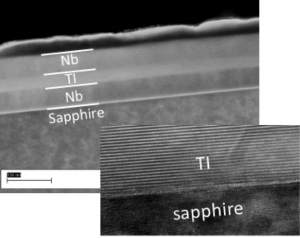Summary
Proximity engineered hybrid materials have shown promise for topological quantum information processing. This form of quantum computing provides a stable, error-tolerant approach for building scalable quantum information processors. Topological quantum computing relies on braiding non-Abelian particles, such as Majorana fermions, which do not exist in nature. One can however use materials engineering to create these particles in topological insulators that are proximity coupled to superconductors and magnetic insulators. In this project we synthesize high quality topological insulators and superconductors, couple them together to form a clean interface (“strong proximity”), and use tunneling spectroscopy to identify the presence of Majorana fermions. Once we are able to move the Majorana particles in a controlled fashion, we then braid an array of them and extract topological quantum information. This will provide the first demonstration of non-Abelian statistics on topological insulators and the first realization of topological quantum computing.

Figure 1. Example of a superconductor/topological insulator (TI) heterostructure on sapphire. Well-defined interfaces are clearly visible.
Related Content

Development of Terahertz Polariton Lasers
Theoretical and experimental results show that the polariton lasing mechanism is a promising basis for a compact, efficient source of terahertz radiation.
July 1, 2017

Inverse Photoemission Spectroscopy of Quantum Materials
Summary Quantum materials that exhibit strong electron correlations lead to phenomena, such as superconductivity and topologically protected states, that are important for quantum computation, sensing, and other applications. For example, we may utilize symmetry protected topological states to make qubits that are robust against decoherence, while advances in high temperature superconductors may significantly reduce […]
September 20, 2018

Mesoscopic systems as coherent control elements
Summary Mesoscopic systems provide a new tool for quantum systems design. In particular, they are enabling of robust quantum control. Here “mesoscopic system” refers to a connected network where each element, if studied alone, would be a quantum bit. The network is too big to be treated fully quantum mechanically. We do not have individual […]
September 1, 2016
Novel High-Speed Receiver for Quantum Communication and Sensing
Summary An essential aspect of a quantum channel is the detection and analysis of quantum signals in the form of photons. For most free-space applications, the photons are polarization encoded, e.g. by assigning the ‘0’ to horizontally polarized photons and ‘1’ to vertically polarized photons. However, where the geometric reference is not constant at all […]
January 1, 2019

